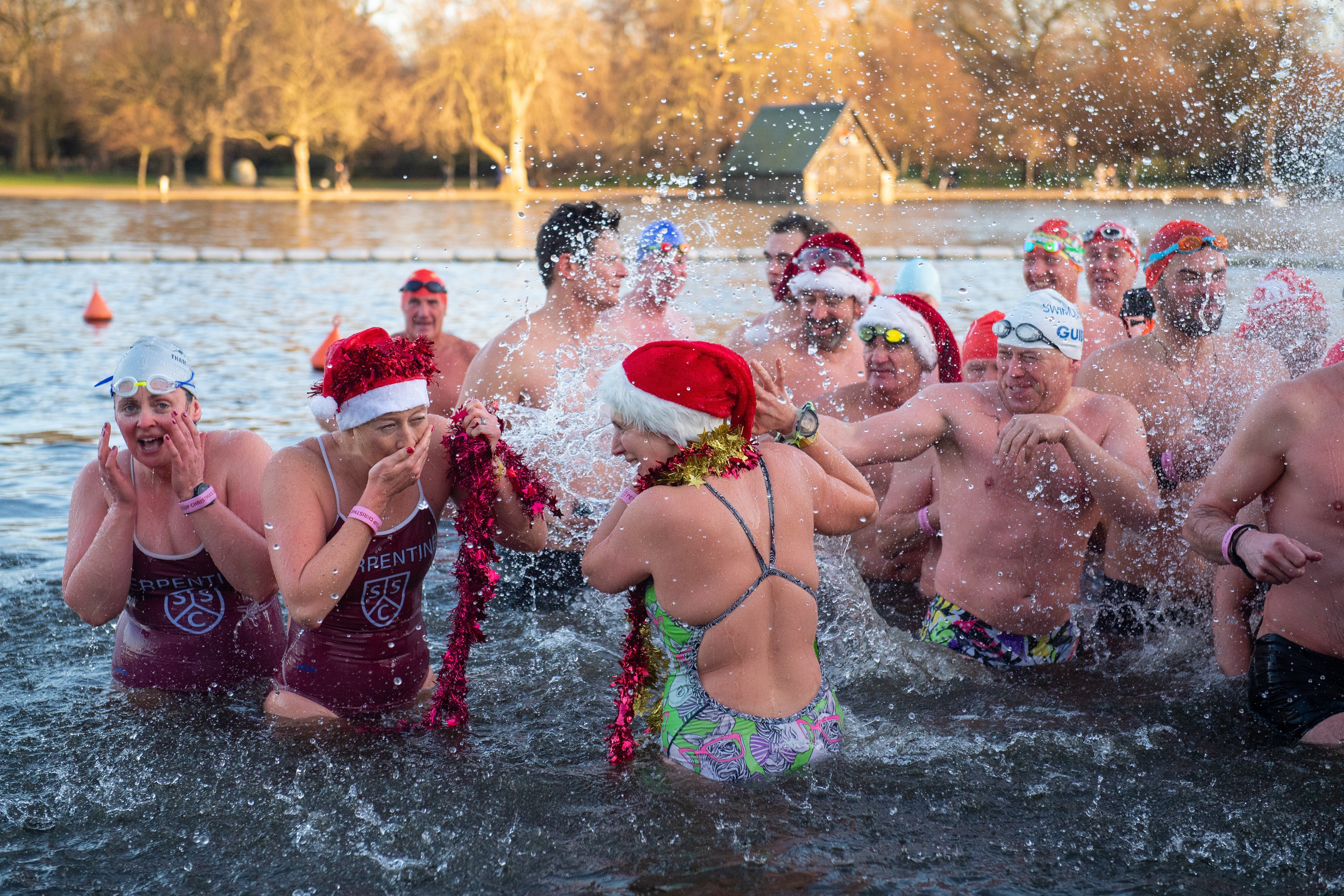
Samoa celebrates 13 days of Christmas, while in Barcelona a log is burned and beaten until it defecates gifts. At this time of goodwill to all, we take a look at the often bizarre traditions surrounding it
One of the questions my six-year-old daughter has begun to ask concerns Santa Claus. How does he manage to deliver all those presents to the world’s children in a single night? Luckily, she already knows the answer: a combination of magic reindeer, an ability to scale the insides of chimneys at warp speed and a deft negotiation of international time zones.
Another new question this Christmas is: do people across the world celebrate Christmas in the same way? Right now, she thinks eight billion people celebrate like she does, eating their weight in advent calendar chocolate, singing Jingle Bells over and over until you think no other words exist, and dropping none-too-subtle clues about what should drop down our own chimney come Christmas Day.
But her hinting belies a good question. How do people in different cultures in different countries celebrate the festive season? Hitching a ride on Santa’s sleigh, we will chase the sun around the world following the season of goodwill.
There are various locations Santa could begin our journey. Kiritimati Island is not only the first place that sees the sun each day, but is pronounced “Christmas” in the Kiribati language. The name comes courtesy of Captain James Cook, who dropped anchor here on Christmas Eve 1777: “As we kept our Christmas here, I called this discovery Christmas Island.”
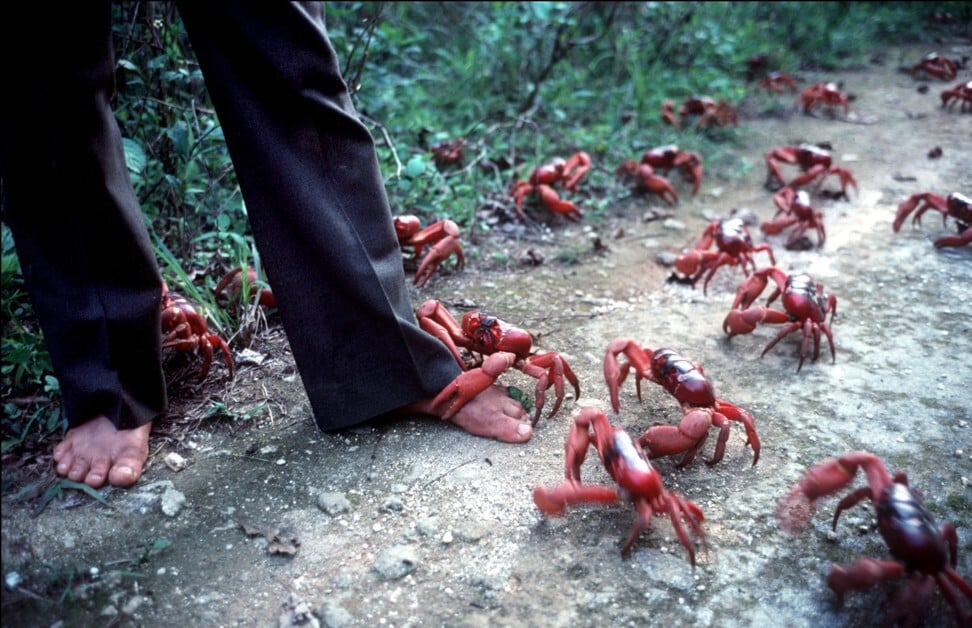
The native population would have more reasons for cursing the coming of the Western Christmas. Less than 200 years later, Britain and the United States chose the atoll as the testing ground for their nuclear weapons, causing devastating long-term health problems for the Kiritimati islanders.
This Christmas Island shouldn’t be confused with the “other” Christmas Island in the Indian Ocean – which was also “named” by an English explorer at Christmas (Captain William Mynors in 1643). If you find yourself there this Christmas, you might see a festive migration of red crabs towards the ocean.
From Kiritimati, we could transfer some 2,000km to the equally remote Tokelau Islands. In 2010, they doubled as a party venue after the extraordinary rescue of three local teenage boys who had been lost at sea for 50 days.
On Samoa, 12 days of Christmas are just not enough. Celebrations begin 13 days in advance, with Christmas carols sung each night across the island. This 22-year tradition is so popular that it is broadcast nightly on television. One exception was 2019, when an outbreak of measles forced the event to be cancelled.
Christmas in New Zealand is essentially a summer holiday, with barbecues, cold desserts such as pavlova, and jandals (a Japanese-inspired sandal) the order of the day. Many New Zealanders mark the month by enjoying the pōhutukawa and rātā trees, also known as New Zealand’s Christmas trees, which bloom over the festive season. In Maori culture, the crimson flowers represent the blood of Tawhaki, who died in the heavens trying to avenge his father. An added bonus is that all advertising is banned on Christmas Day itself.
For Australians, Christmas – or to translate into Aussie, the Chrissie bevy and pressie fest – means barbecue, the Boxing Day Test match (a game of cricket played annually before raucous crowds of almost 90,000) and building sandcastle snowmen on Bondi Beach.
Food dominates many Christmas rituals in this time zone. Flying north to Japan, we discover one of the most baffling: the festive eating of Kentucky Fried Chicken. It began with a 1974 advertising campaign, whose slogan “Kurisumasu ni wa kentakkii!” (“Kentucky for Christmas!”) must rank as one of the most successful in history. Today, almost four million Japanese tuck into a special, seasonally spiced bucket of the Colonel’s finest, which means you should order early (mid-November is advised) to avoid disappointment.
Ideally, it should be followed by kurisumasu keki, Japanese Christmas cake – a light sponge covered with cream and strawberries that after World War II symbolised the nation’s rediscovered prosperity. As a soundtrack, Beethoven’s 9th symphony is recommended. Introduced by German prisoners of war during World War I; the choral work is now performed across Japan in the final month of the year.

On Christmas Eve in China, don’t be surprised if someone hands you an apple, to welcome Santa Claus or Dun Che Lao Ren, “Christmas Old Man”. This phonetic pun – on (píngānyè, Mandarin for Christmas Eve) and (píngguo, for apple) – has inspired stories in which a real apple becomes a mystical “Peace Apple”, if you collect 24 Golden Delicious from 24 differently named people in 24 locations.
Having dropped by to mingle with the ice skaters and blue and green Santas so popular in Korea, it is time to head west. It wouldn’t be Christmas if we didn’t pause over Bethlehem and watch the immense queue to enter the Grotto at the Church of the Nativity, which as the name suggests marks the spot where Jesus was born. Pilgrims enduring the long wait sing and clap loudly, and are reprimanded by a priest-cum-bouncer if they become too raucous.
Glancing down from our sleigh, might Santa – aka St Nicholas – stop over his hometown of Myra, in Turkey? St Nicholas has his own feast day on December 6, with its own fluid traditions that reward well-behaved children with gifts, and deflate naughty ones by leaving lumps of coal beneath their pillows.
Arguably the place to be on St Nicholas’ Eve – or Sinterklaasavond – is the Netherlands, where parents trick their poor children into thinking St Nick has forgotten them – again. The deception has become increasingly controversial, thanks to “Zwarte Piet” – originally a Spanish Moor who is often portrayed by someone in blackface.
Flying on, we might notice how many nations celebrate Christmas on January 7, such as the Orthodox churches in Russia and Ethiopia. One difference is that, on Christmas Eve, Russians gorge on the 12 dishes demanded by the traditional “Holy Supper”. The number is dictated by Jesus’ disciples and the fish-based menu by the embargo on red meat, poultry and dairy products demanded by the Nativity Fast that begins around November 14.
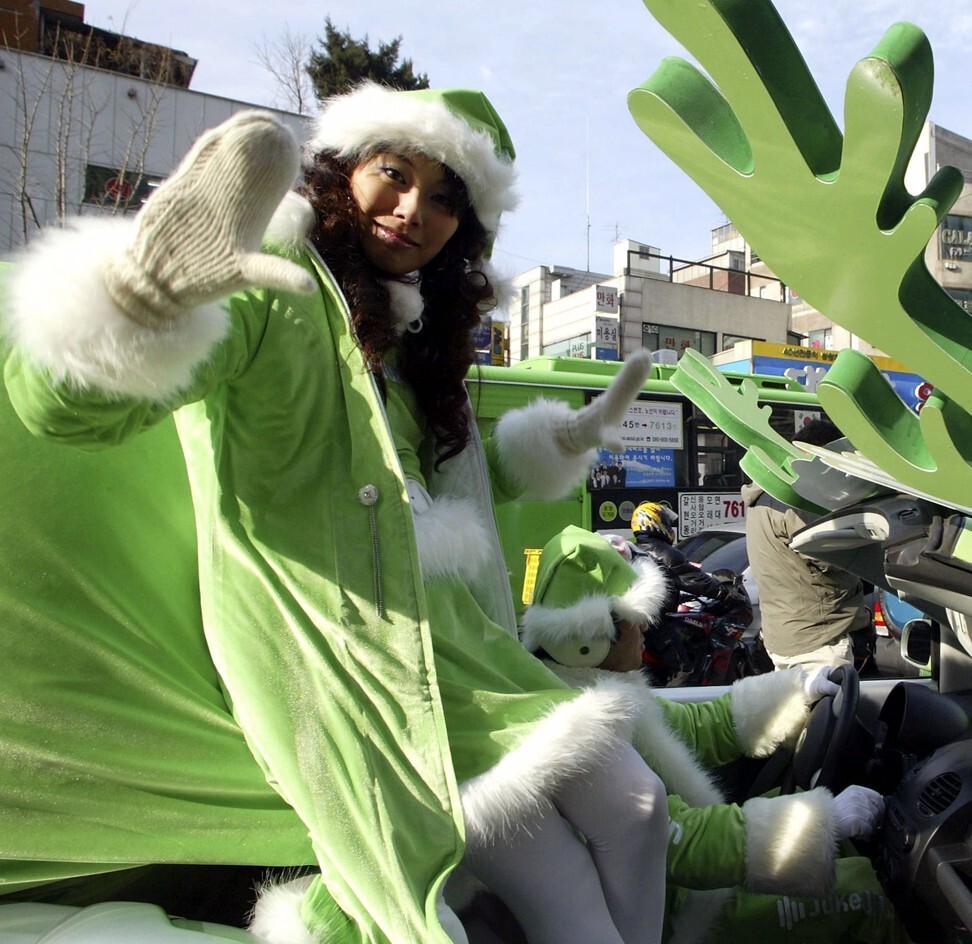
There are as many Christmas variations across Africa as there are tribes. In Kenya, the Christmas tree of choice is the cypress; in Madagascar it is the poinsettia; in Zimbabwe it is ivy. Goat is the meal of choice across East Africa (Ethiopia, Kenya, Tanzania) and also Botswana. In South Africa, camping is popular, as is malva (or lekker) pudding, a heavy, jammy dessert covered in syrup.
Europe, unsurprisingly, has a dazzling variety of festive rituals. In Denmark, television companies mark the season of goodwill by encouraging binge-watching of Julekalendere – essentially an advent calendar in a television show’s clothing. Each season runs for 24 days, with a new episode broadcast every day until Christmas Eve. Advent for Estonian children means placing a sock or slipper on their windowsill and hoping a passing elf will put a sweet inside.
This is smooth sailing compared with the fate awaiting naughty Austrian kinder should they meet Krampus, a hideous, toothy, horned monster (think Igbo demon crossed with The Lord of the Rings’ Uruk-hai), who stuffs naughty children into his sack. Cities across Austria stage Krampus events, at which Krampuses chase citizens up and down the streets.
There are equivalents across the continent – from the foot-stamping Nisse elf in Denmark to the terrifying Kallikantzaroi of Greece. Each festive season these nasty goblins crave nothing less than the end of the world. They attempt this by chopping down, or rather failing to chop down the “World Tree”.
We are still unsure what to make of the Catalan Tió de Nadal, which is essentially a small log dressed up with a brightly coloured red cap and a big smiling face. So far, so good – until Christmas Eve, when the log is burned in the household fireplace and beaten with sticks until it defecates presents.
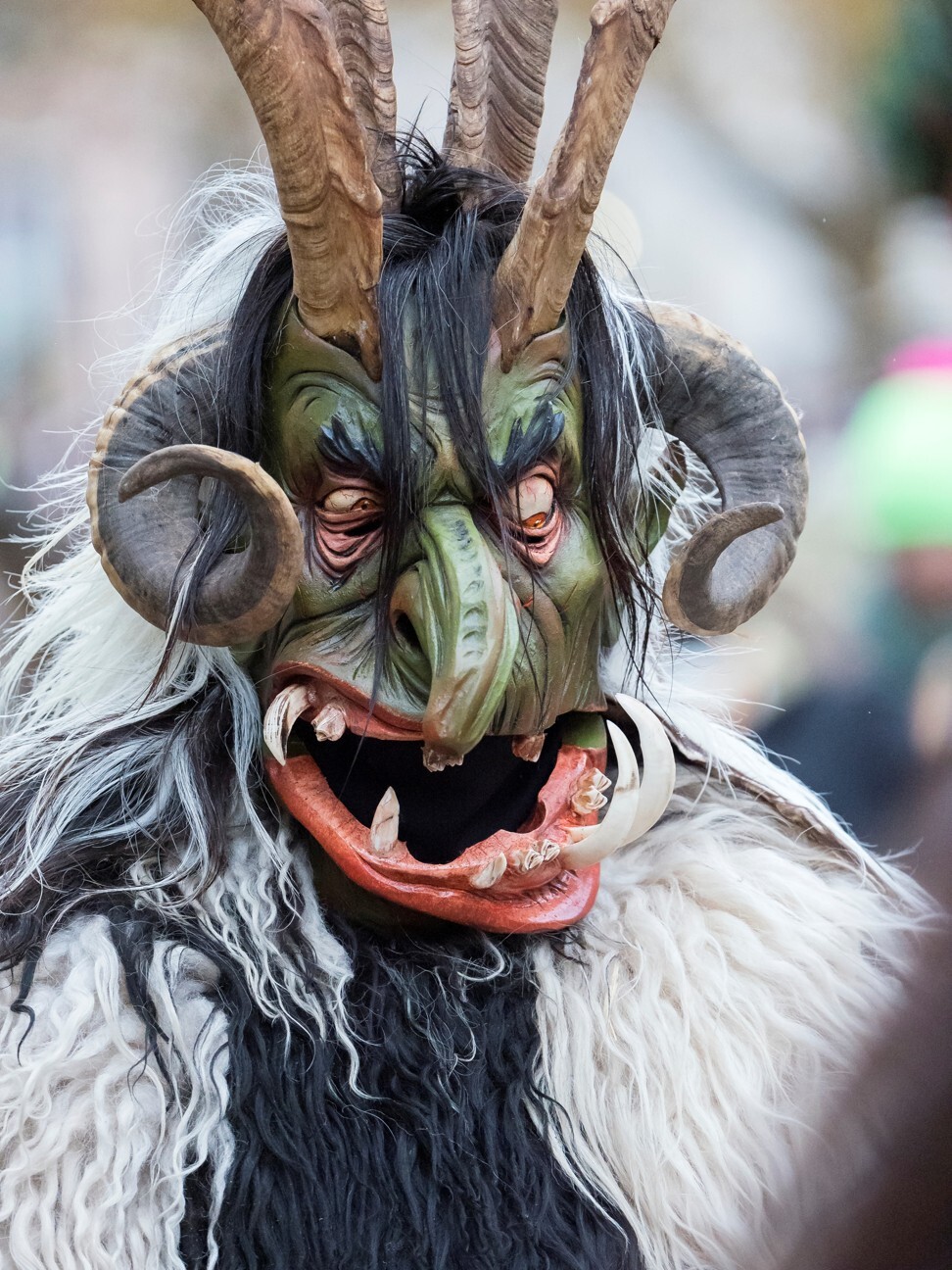
Germany hosts a rather more clean-cut, if no less bizarre ritual each New Year’s Eve: the national viewing of Dinner for One, an 18-minute comic skit written by British playwright and actor Lauri Wylie. Essentially, a butler pretends to be all four guests at a dinner party hosted by his senile patron and gradually gets more and more drunk. First performed on stage in 1934, Dinner for One was filmed by German television in 1963, little suspecting that it would enter the Guinness World Records as the most repeated TV show in history.
A Ye Older Englande can be glimpsed in a mummers’ play, often performed on Boxing Day. Mixing music (often bells), dance, swordplay and street theatre, this lighthearted forerunner to the pantomime pits St George against a dragon (or sometimes a Turkish Knight), and involves a doctor whose healing hands look forward symbolically to the end of winter.
Indeed, one of the more famous, if slippery British traditions is Boxing Day, which falls on St Stephen’s Day. So named, so it is reputed, because wealthy families filled boxes with presents for their servants, tenants or nearby poor, it is the English ancestor of Black Friday – essentially a crazed day of shopping for those not already spent from doing precisely that over the previous month.
An even more crazed Christmas or Boxing Day tradition is to take a swim outside in a freezing cold body of water: the 100-metre splash in London’s Serpentine has been an annual ice-box challenge since 1864.
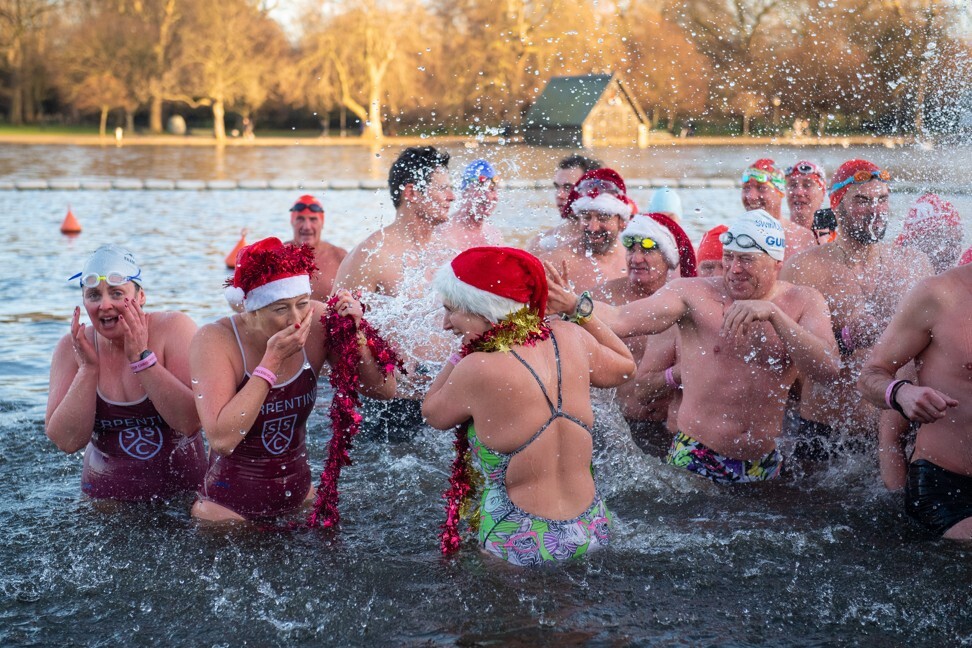
The United States has successfully inherited, pilfered, refined and repackaged many of Britain’s traditions – although it has largely made an exception where Christmas pudding is concerned. There are arguably more and stranger rituals across America than the rest of the world combined: the Christmas tree made of tumbleweed that for the past 60 years has graced Chandler, Arizona, and a nation of Santas who variously scuba-dive (Camden, New Jersey), surf (Laguna Niguel, California), and in Missouri are displaced by fairy princesses.
A personal favourite – thanks to American in-laws – is the annual watching of A Christmas Story, a low-budget 1983 movie about one young boy’s machinations to convince Santa (and his parents) to gift him a Red Ryder BB gun for Christmas.
Flying over South America, it is almost the end of our journey. We could start in Oaxaca, Mexico, and The Night of the Radishes, a radish-carving competition held on December 23. Not another one, I hear you cry. The ritual began in 1897 as a way to publicise the Christmas market. Such has its popularity been over the past 120 years that farmland has been dedicated to growing the vegetable.
In soap operas, Christmas is frequently a time for a fight. In the village of Santo Tomas, in Chumbivilcas province, Peru, this is an actual custom, with the year’s most peaceful day chosen to settle scores built up over the year. Takanakuy attracts grudge holders from across the region, who announce their locale with brightly coloured ski masks and costumes that include locusts and smart colonial slave-owning apparel.
Contestants prepare by participating in days of dedicated heavy drinking. The bouts proper begin with high-pitched singing and dancing, and are soundtracked by waylilla music. The winners and losers lick their wounds with further drinking.

The Falkland Islands must host one of the stranger carol concerts. On Christmas Eve the islanders gather to sing and say prayers beneath the Whalebone Arch, which was constructed in 1933 from the jaw bones of two blue whales. Otherwise, avoid Brazil in December if you don’t like raisins (they are served with everything). Give Argentina a wide berth on Christmas Eve if fireworks or boliches (nightclubs) are not your thing.
If on the other hand you are a child who likes to make some noise you probably should go to Cuba. Las Parrandas, an annual parade in Remedios, was inspired, so the myth goes, by a priest who employed the town’s youth to wake up his sleeping congregation by shake, rattle and rolling.
Which makes it a good time to finally head for home. For Santa Claus, this means Lapland – or Korvatunturi – where Christmas is celebrated with prune juice, house cleaning and presents for animals as well as people.
Whether you are planning to celebrate Christmas, ignore Christmas, enjoy a day off work, or a bit of all three, make it a peaceful and safe one, and may 2021 find our wide and variegated globe in a more joyful holiday mood than 2020.

